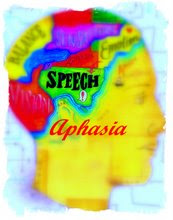Excerpt about 'Aphasia' from the book "NORD Guide to Rare Disorders" (Copyright © 2007 Lippincott Williams & Wilkins)
Aphasia (also called dysphasia), impaired expression or comprehension of written or spoken language, reflects disease or injury of the brain’s language centers. (See Where language originates.) Depending on severity, aphasia may slightly impede communication or may make it impossible. It can be classified as Broca’s, Wernicke’s, anomic, or global. Anomic aphasia eventually resolves in more than 50% of patients, but global aphasia is usually irreversible. (See Identifying types of aphasia, page 58.)
▲TopEmergency Actions
Quickly look for signs and symptoms of increased intracranial pressure (ICP), such as pupillary changes, decreased level of consciousness (LOC), vomiting, seizures, bradycardia, widening pulse pressure, and irregular respirations. If you detect increased ICP, administer mannitol I.V. to decrease cerebral edema. Also, make sure that emergency resuscitation equipment is readily available to support respiratory and cardiac function, if necessary. You may have to prepare the patient for emergency surgery.
▲TopHistory
If the patient doesn’t display signs of increased ICP, or if his aphasia has developed gradually, perform a thorough neurologic examination, starting with the patient’s history. You’ll probably need to obtain this history from the patient’s family or companion because of the patient’s impairment. Ask if the patient has a history of headaches, hypertension, seizure disorders, or drug use. Also ask about the patient’s ability to communicate and to perform routine activities before aphasia began.
▲TopPhysical assessment
Check for obvious signs of neurologic deficit, such as ptosis or fluid leakage from the nose and ears. Take the patient’s vital signs and assess his LOC. Be aware, though, that assessing LOC is typically difficult because the patient’s verbal responses may be unreliable. Also, recognize that dysarthria (impaired articulation due to weakness or paralysis of the muscles necessary for speech) or speech apraxia (inability to voluntarily control the muscles of speech) may accompany aphasia; so speak slowly and distinctly, and allow the patient ample time to respond. Assess the patient’s pupillary response, eye movements, and motor function, especially his mouth and tongue movement, swallowing ability, and spontaneous movements and gestures. To best assess motor function, first demonstrate the motions and then have the patient imitate them.
▲TopMedical causes
▲TopAlzheimer’s disease
With Alzheimer’s disease, a degenerative disease, anomic aphasia may begin insidiously and then progress to severe global aphasia. Associated signs and symptoms include behavioral changes, loss of memory, poor judgment, restlessness, myoclonus, and muscle rigidity. Incontinence is usually a late sign.
▲TopBrain abscess
Any type of aphasia may occur with brain abscess. Usually, aphasia develops insidiously and may be accompanied by hemiparesis, ataxia, facial weakness, and signs of increased ICP.
▲TopBrain tumor
A brain tumor may cause any type of aphasia. As the tumor enlarges, other aphasias may occur along with behavioral changes, memory loss, motor weakness, seizures, auditory hallucinations, visual field deficits, and increased ICP.
▲TopCreutzfeldt-Jakob disease
Creutzfeldt-Jakob disease is a rapidly progressive dementia accompanied by neurologic signs and symptoms, such as myoclonic jerking, ataxia, aphasia, vision disturbances, and paralysis. It generally affects adults ages 40 to 65.
▲TopEncephalitis
Encephalitis usually produces transient aphasia. Its early signs and symptoms include fever, headache, and vomiting. Seizures, confusion, stupor or coma, hemiparesis, asymmetrical deep tendon reflexes, positive Babinski’s reflex, ataxia, myoclonus, nystagmus, ocular palsies, and facial weakness may accompany aphasia.
▲TopHead trauma
Any type of aphasia may accompany severe head trauma; typically, aphasia occurs suddenly and may be transient or permanent, depending on the extent of brain damage. Associated signs and symptoms include blurred or double vision, headache, pallor, diaphoresis, numbness and paresis, cerebrospinal otorrhea or rhinorrhea, altered respirations, tachycardia, behavioral changes, and increased ICP.
▲TopSeizures
Seizures and the postictal state may cause a transient aphasia if the seizures involve the language centers.
▲TopStroke
The most common cause of aphasia, stroke may also produce Wernicke’s, Broca’s, or global aphasia. Associated findings include decreased LOC, right-sided hemiparesis, homonymous hemianopia, paresthesia, and loss of sensation. These signs and symptoms may appear on the left side if the right hemisphere contains the language centers. (See Associated disorder: Stroke.)
▲TopTransient ischemic attack
Transient ischemic attacks can produce any type of aphasia, which occurs suddenly and resolves within 24 hours of the attack. Associated signs and symptoms include transient hemiparesis, hemianopia, and paresthesia (all usually right-sided), dizziness, and confusion.
▲TopSpecial considerations
Immediately after aphasia develops, the patient may become confused or disoriented. Help to restore a sense of reality by frequently telling him what has happened, where he is and why, and what the date is. Carefully explain diagnostic tests, such as skull X-rays, computed tomography scan or magnetic resonance imaging, angiography, and EEG. Later, expect periods of depression as the patient recognizes his disability. Help him to communicate by providing a relaxed, accepting environment with a minimum of distracting stimuli.
▲TopPediatric pointers
Recognize that the term childhood aphasia is sometimes mistakenly applied to children who fail to develop normal language skills but who aren’t considered mentally retarded or developmentally delayed. Aphasia refers solely to loss of previously developed communication skills.
Brain damage associated with aphasia in children most commonly follows anoxia — the result of near drowning or airway obstruction.
▲TopPatient counseling
Assist the patient with an alternate means of communication, such as a communication board. If aphasia is due to a stroke, teach the patient to reduce risk factors, such as not smoking, eating a healthy diet, and exercising regularly.
Copyright Details: NORD Guide to Rare Disorders, Copyright © 2003 Lippincott Williams & Wilkins.
Subscribe to:
Post Comments (Atom)



No comments:
Post a Comment